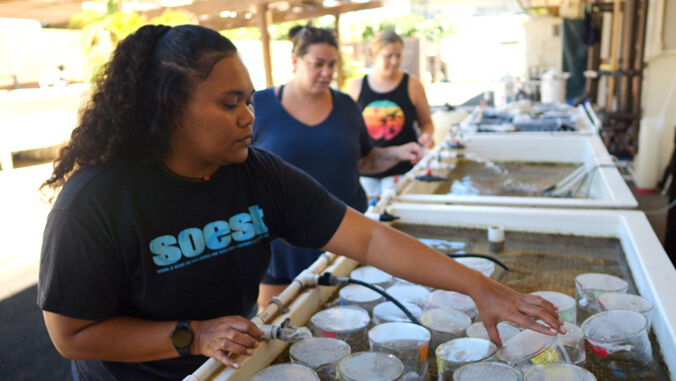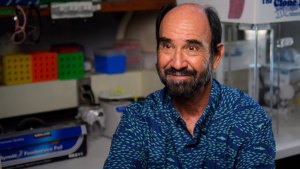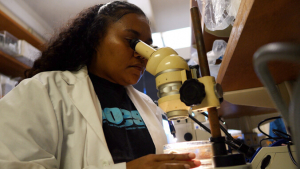
The University of Hawaiʻi at Mānoa is leading a team of higher-education institutions across the Pacific with a $5-million grant that aims to support Native Hawaiians and Pacific Islanders pursue degrees in marine and environmental sciences. These groups are highly underrepresented in STEM disciplines. Over the five-year grant period, institutions expect to help approximately 250 scholars and culturally connected students, allowing them to serve their local communities.
The grant was awarded from the U.S. National Science Foundation to a consortium of Pacific Island institutions of higher education. The grant will buoy students attending UH Mānoa, Palau Community College (PCC), American Samoa Community College, the College of Micronesia – FSM, the College of the Marshall Islands and Northern Marianas College.

“The project addresses a primary cause of low enrollment of island-based students in STEM: financial challenges and the associated need to work while also attending classes,” said Bob Richmond, director of the UH Mānoa Kewalo Marine Laboratory (KML) in the School of Ocean and Earth Science and Technology. “Removing this barrier is a way to support the recruitment and retention of talented students with bright minds, cultural connections and passion into these fields who might otherwise not have access to higher education opportunities.”
The program will be led by Richmond; Lauren Wetzell, education specialist and doctoral student at the College of Education; Noelani Puniwai, associate professor at the UH Mānoa Hawaiʻinuiākea School of Hawaiian Knowledge; Kaho Tisthammer, research associate at KML; Patrick Tellei, president of PCC; and Vernice Yuji, chair of PCC’s Science Department.
Throughout the Pacific, there is a need for well-educated scientists who are prepared with the skills and knowledge necessary to address a multitude of challenges including sustainability, ecosystem conservation, climate change adaptation, food security and natural hazard preparedness.
“Providing scholarships for students who are from Hawaiʻi and from the Pacific to stay and work and be connected is a huge investment into the future of the Pacific and this is where we should be putting our efforts into,” said Puniwai.
Major step forward

This new project builds on existing, successful partnerships between these institutions that supported the strengthening of their marine and environmental science associate degree programs over the past 18 years. The new scholarship program is seen as a major step forward in building on past successes in regional capacity development for Indigenous students.
“It will address the fact that there aren’t many Pacific Islander and Native Hawaiian students in these fields even though we’re people of the ocean and we’re out here in the Pacific,” said Alexi Meltel, a Palauan PhD student at KML. “So hopefully with this grant we’ll be able to get more students into those fields and into long careers.”
To support students who are often the first in their families to attend college, the project will provide guidance in critical activities, such as navigating challenging degree programs, understanding STEM career paths, developing key skills for academic success and addressing barriers to achievement.
Educational research led by Wetzell will further the team’s understanding of how to scale up mentorship practices in culturally meaningful ways such as implementing a dual mentorship model. This research design differs from other mentorship studies in that it concerns the experiences of STEM students who have been historically underrepresented in higher education.
With training in marine and environmental sciences, students can become skilled professionals who can address national and regional needs in critical STEM areas including ocean health, natural resource assessment, protection, restoration and resilience in the face of climate change, and other challenges to environmental and natural resource sustainability.

